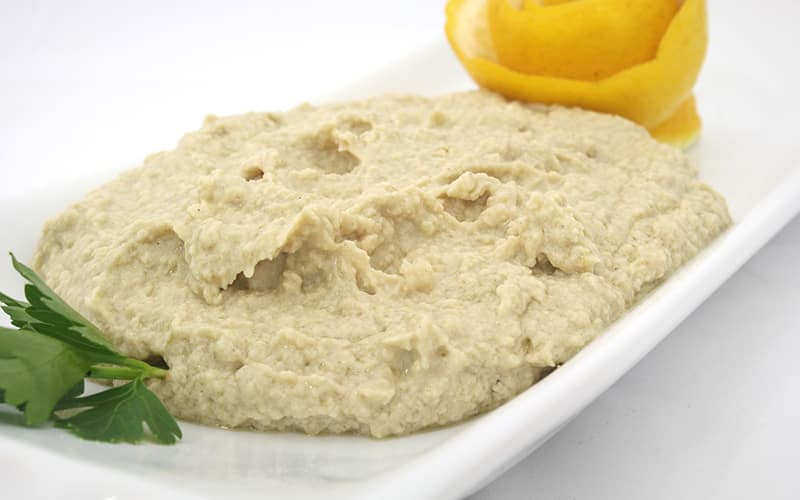
Many athletes prefer to cook at home to better manage nutrients. These tips and tricks will help ensure your home-cooked meal is as healthy (and delicious) as you need it to be!
When cooking at home, remember that recipes are not rulebooks; they can be adjusted to meet nutrition goals or modified based on available ingredients or taste preferences. So, let’s dig in!
Fats
Even in small portions, high-fat foods have more calories than grains or proteins, so be mindful of serving size. Choose heart-healthy vegetable-based oils that are liquid at room temperature instead of butter or coconut oil.
Oils
- Most liquid oils can be substituted for another when cooking and baking, so feel free to substitute.
- When sautéing, use an oil with a high smoke point such as avocado, canola or grapeseed instead of extra virgin olive oil.
- Swap ¾ cup yogurt per 1 cup oil when baking to decrease overall calories and fat.
Butter
- Substitute three-quarters the amount of butter with any liquid oil. For example, if a recipe calls for 8 tablespoons melted butter, add 6 tablespoons oil instead.
- Replace up to half the melted butter in a recipe with applesauce when baking. Applesauce will maintain the moisture but decrease overall calories and fat while adding fiber.
- Swap butter with the same amount of plain Greek yogurt to add moisture to a baked good.
Spreads, Dips and Cheese
- Use hummus or mashed avocado as a sandwich spread instead of mayonnaise or butter
- Substitute plain Greek yogurt for sour cream or mayonnaise. Greek yogurt contains more protein and less fat than mayonnaise
- Pick a strong-flavored cheese like swiss over mozzarella or provolone to decrease the amount used.
Sugar
- Try decreasing the amount of sugar by one-quarter, as most recipes call for more than needed.
White Sugar
- Replace one cup of white sugar with an equal amount of coconut sugar, or with ½ cup of honey, ¾ cup maple syrup, 2/3 cup agave or ½ teaspoon stevia.
- Brown sugar is actually white granulated sugar with added molasses and can be substituted with an equal amount of white sugar when baking. Pro Tip: This substitution may change the texture of the item.
Grains
Swap refined (white) grains for whole grains, which are richer in fiber, vitamins and minerals. For example, a slice of whole grain bread has 4-7 grams of fiber, while white bread typically only has 2-3 grams per slice.
Flour
- For most baking recipes, you can swap up to 50% of white flour for whole grain flour without affecting the taste or texture.
- Flours like quinoa, oat, barley, garbanzo bean, brown rice may be substituted in some recipes. Try using a small amount of the total flour amount at first.
Bread and Pasta
- Try pasta made with beans, lentils, chickpeas or edamame instead of white pasta to increase the amount of protein and fiber per serving
Whole grain vs whole wheat? Whole wheat is a type of whole grain, so either are a great option. Make sure the package says “100% whole grain/wheat."
Proteins
Choose lean protein like chicken, turkey, pork, fish or steak without visible fat/marbling.
Vegetarian & Vegan
- Non-animal proteins have more calories and carbohydrates per serving than animal-based sources. This may result in a higher-calorie meal with an equivalent amount of protein.
- For example, two servings of beans can be substituted for one serving of chicken.
Egg
- When cooking, one egg can be replaced with ½ mashed banana, ¼ cup applesauce, ¼ cup plain Greek yogurt, a flax egg, or ¼ cup vegetable oil in most items.
Milk
- Chose a soy or pea protein milk as opposed to almond, oat, rice or coconut milk for a more similar nutrition content to cow’s milk.
Yogurt/Cottage Cheese
- Choose Greek yogurt or Icelandic yogurt over traditional yogurt for more protein per serving
- Cottage cheese has 12-15 grams of protein per ½ cup and can be added into a smoothie, to scrambled eggs, or eaten alone as a protein-rich snack.
- Choose whole fat dairy products instead of low-fat options if you’re looking to increase calories at meals.
Ground Meat
- Both ground turkey and ground beef are great sources of protein, but choose ground turkey or ground beef with at least 85% lean meat.
